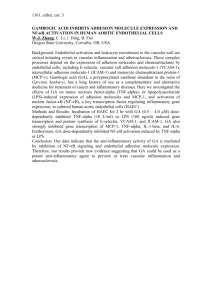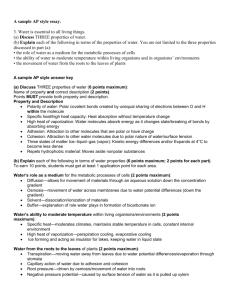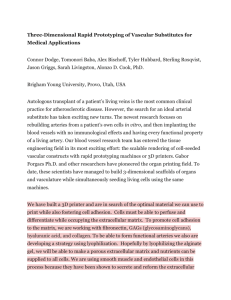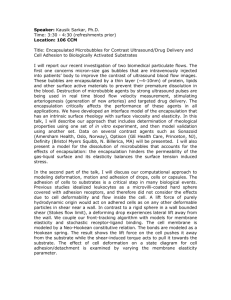107 6plex
advertisement
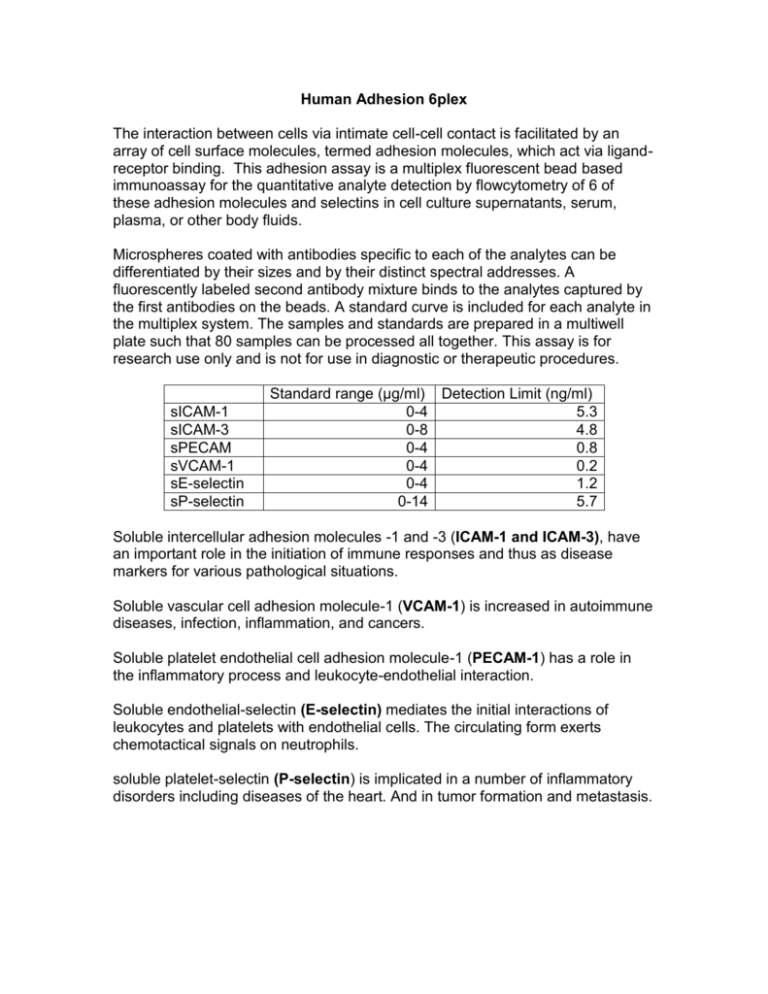
Human Adhesion 6plex The interaction between cells via intimate cell-cell contact is facilitated by an array of cell surface molecules, termed adhesion molecules, which act via ligandreceptor binding. This adhesion assay is a multiplex fluorescent bead based immunoassay for the quantitative analyte detection by flowcytometry of 6 of these adhesion molecules and selectins in cell culture supernatants, serum, plasma, or other body fluids. Microspheres coated with antibodies specific to each of the analytes can be differentiated by their sizes and by their distinct spectral addresses. A fluorescently labeled second antibody mixture binds to the analytes captured by the first antibodies on the beads. A standard curve is included for each analyte in the multiplex system. The samples and standards are prepared in a multiwell plate such that 80 samples can be processed all together. This assay is for research use only and is not for use in diagnostic or therapeutic procedures. sICAM-1 sICAM-3 sPECAM sVCAM-1 sE-selectin sP-selectin Standard range (µg/ml) Detection Limit (ng/ml) 0-4 5.3 0-8 4.8 0-4 0.8 0-4 0.2 0-4 1.2 0-14 5.7 Soluble intercellular adhesion molecules -1 and -3 (ICAM-1 and ICAM-3), have an important role in the initiation of immune responses and thus as disease markers for various pathological situations. Soluble vascular cell adhesion molecule-1 (VCAM-1) is increased in autoimmune diseases, infection, inflammation, and cancers. Soluble platelet endothelial cell adhesion molecule-1 (PECAM-1) has a role in the inflammatory process and leukocyte-endothelial interaction. Soluble endothelial-selectin (E-selectin) mediates the initial interactions of leukocytes and platelets with endothelial cells. The circulating form exerts chemotactical signals on neutrophils. soluble platelet-selectin (P-selectin) is implicated in a number of inflammatory disorders including diseases of the heart. And in tumor formation and metastasis.
